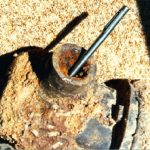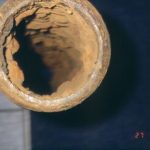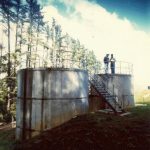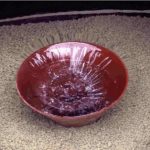CIVIL AND ENVIRONMENTAL ENGINEERING
Limestone Stabilisation
A significant proportion of the surface waters of Southern Africa characteristically have low total alkalinity (0-25 mg/L as CaCO3), low calcium (0-25 mg/L as CaCO3) and low pH (4.0 to 7.0).
 Furthermore, virtually all of the groundwaters of the southern and eastern fringes of South Africa (up to approximately 200 km inland) have similar characteristics. In addition, surface waters of the southern region have variable colour due to the presence of complex Natural Organic Matter (NOM) constituents; the presence of which can further lower pH to as low as 4.0.
Furthermore, virtually all of the groundwaters of the southern and eastern fringes of South Africa (up to approximately 200 km inland) have similar characteristics. In addition, surface waters of the southern region have variable colour due to the presence of complex Natural Organic Matter (NOM) constituents; the presence of which can further lower pH to as low as 4.0.

These soft, acidic waters attack distribution systems through being aggressive (to cement concrete) and corrosive (to metals). Such attack can have significant implications relating to lost water, distribution network rehabilitation requirements and undesirable change in water quality; accordingly, in larger, formal water supply systems, water conditioning processes are used to stabilise the water thereby ameliorating aggressive and corrosive attack.
 Conventionally, stabilisation of soft, acidic waters is achieved via the addition of lime and carbon dioxide. However, for smallholdings, farms, country hotels and smaller municipalities, stabilisation via lime dosing (with or without carbon dioxide), is problematic, requiring skilled, well-trained staff and expensive equipment. Furthermore, stabilisation with lime is expensive; often comprising about half of the overall chemical cost of treating brown waters. For small volume water users, stabilisation is not readily implementable and the costs of corrosion can be significant. However, an alternative means of stabilising soft, acidic waters is via contact with an appropriate limestone (CaCO3). Limestone-based stabilisation has been shown to be an attractive means of mitigating against both aggression and corrosion, principally because of simplicity of operation, and significantly reduced chemical costs.
Conventionally, stabilisation of soft, acidic waters is achieved via the addition of lime and carbon dioxide. However, for smallholdings, farms, country hotels and smaller municipalities, stabilisation via lime dosing (with or without carbon dioxide), is problematic, requiring skilled, well-trained staff and expensive equipment. Furthermore, stabilisation with lime is expensive; often comprising about half of the overall chemical cost of treating brown waters. For small volume water users, stabilisation is not readily implementable and the costs of corrosion can be significant. However, an alternative means of stabilising soft, acidic waters is via contact with an appropriate limestone (CaCO3). Limestone-based stabilisation has been shown to be an attractive means of mitigating against both aggression and corrosion, principally because of simplicity of operation, and significantly reduced chemical costs.
Particular aspects that have been explored and tested in the past include:
 • Groundwater Stabilisation/Iron Removal Systems
• Groundwater Stabilisation/Iron Removal Systems
Research, Development and Implementation (RDI) relating to the use of small scale stabilisation/iron removal systems for groundwater; and in particular, determination of recommended maximum levels of dissolved iron and manganese in the raw feed, and scaling up of the system from 50 m3/day to the order of 1 ML/day.
• Surface Water Stabilisation Systems
RDI for medium scale (2-40 ML/d) limestone stabilisation systems for surface water; and in particular, to determine the recommended upper colour limit in the raw water feed to the units, and to consolidate existing data on these units. In addition, large-scale limestone stabilisation systems for surface water were explored as part of the Sidestream Stabilisation Process (SSP).
 • Assessing the Degree of Protection Afforded by Partial Stabilisation
• Assessing the Degree of Protection Afforded by Partial Stabilisation
Assessment of the relative degree of protection that limestone mediated stabilisation affords to common conduit materials, namely iron, copper and cement, and to assess the respective costs of protection against the degree of protection afforded.
• Technology Transfer
The effective transfer of small to medium scale limestone mediated treatment technologies via development of practical design guidelines for both small and medium scale limestone mediated systems.
For more information on the limestone stabilisation, please contact us.






